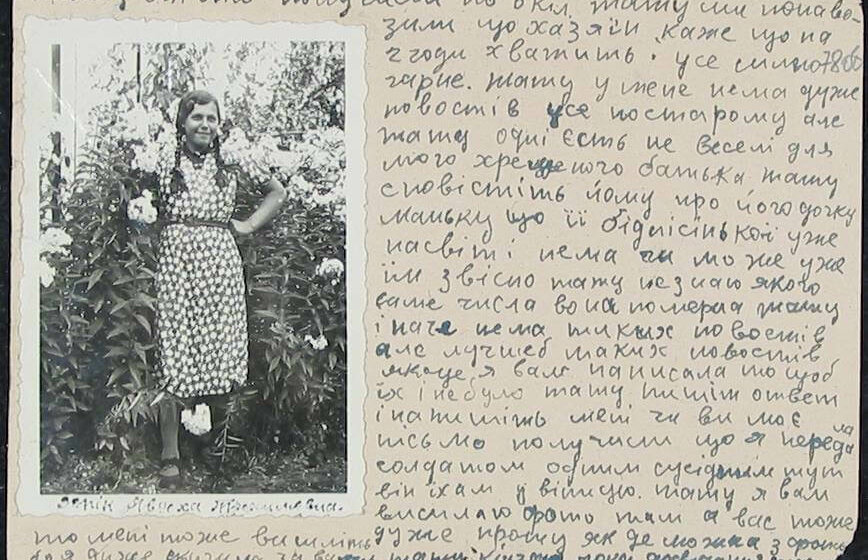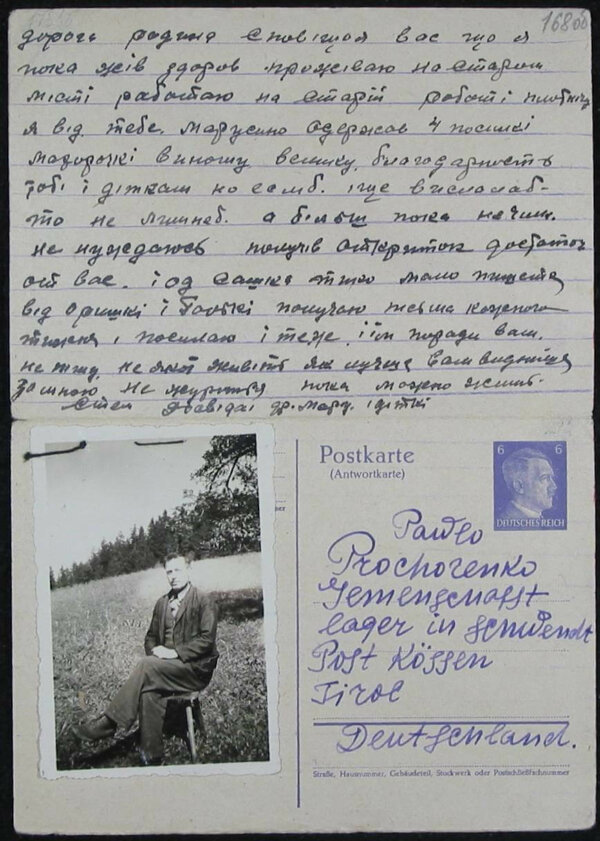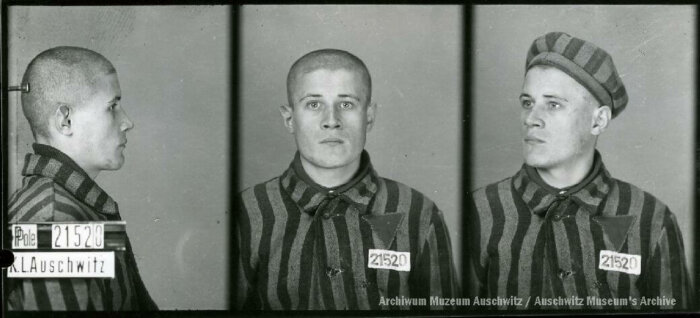Fates on paper:
New documents in the online archive

The Arolsen Archives have added around a million new documents to their online archive. These latest additions include pictures of prisoners and transport lists from Auschwitz concentration camp as well as thousands of letters written by Soviet forced laborers to their families. A comprehensive collection of documents from the British and French occupation zones can now also be searched for the names of victims of Nazi persecution.
“Be good to me, little sister, I have not forgotten you and I will never forget you. You are angry with me for not sending postcards. I have already written three postcards, but I don’t know why you don’t get them,” wrote Maria Borodinja to her sister Anna in April 1943. Her postcard is one of thousands of documents from a new collection in the online archive of the Arolsen Archives that contains letters from Soviet citizens who were deported to Germany as forced laborers and wanted to write to their families back home.
*Names cannot be equated with people. Some of the names of people persecuted by the Nazis appeared on several documents and were therefore counted more than once.

Sometimes the forced laborers also attached photos to their letters and postcards.
But their relatives very probably never received these messages. Today, they are stored in Ukrainian state archives, which are now trying to return undelivered letters to the descendants of these so-called Eastern workers. The Arolsen Archives have received copies of the documents and have added them to their archives with the aim of making more information about forced laborers available.
Digital information at your fingertips
To make it possible to search the documents in the online archive of the Arolsen Archives for keywords, not only are a large number of staff involved in digitizing the documents, they are also busy indexing them. Important pieces of information such as names, locations, and dates must be typed out and linked to each individual document. State-of-the-art technology for fast data retrieval provided by our partner, the World Holocaust Remembrance Center Yad Vashem, also helps to make the documents more searchable.
Watch this video to get the best tips for your search in our online archive:


New documents on Auschwitz
The Arolsen Archives have been working with the Auschwitz-Birkenau State Museum for two years now to provide access to more information on the names and fates of the people who were imprisoned there. As a result of this partnership, the well-known Photos of male prisoners taken in Auschwitz can now be accessed in the online archive. In addition, students taking part in our “Every Name Counts” project have been working on Transport lists (to and from Auschwitz and other camps), which can now be searched for individual names.
Deportation lists from Vienna
By entering into a new cooperation with the Documentation Center of Austrian Resistance in Vienna, we have been able to add deportation lists of Jews from Austria to the online archive. These documents were already available beforehand, but only as old copies that were barely legible and hardly searchable. “Vienna was home to one of the largest Jewish communities in the former German Reich,” explains the Deputy Head of Archives Giora Zwilling (Arolsen Archives). “Thanks to our cooperation with the Documentation Archive, we received photos and metadata for the deportation lists in October and integrated them into our online archive.”

